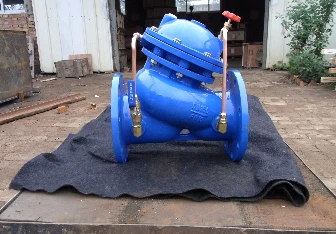Dec . 23, 2024 05:38 Back to list
Steps to Effectively Shut Off Your Water Valve at Home
How to Close the Water Valve A Step-by-Step Guide
Understanding how to properly close a water valve is essential for every homeowner. Whether you're dealing with a plumbing emergency, performing maintenance on your plumbing system, or preparing for seasonal changes, knowing how to close the water valve correctly is crucial to prevent water damage and ensure safety. This article will provide a comprehensive step-by-step guide on how to close the water valve effectively.
Step 1 Identify the Water Valve
Before you can close a water valve, you need to know where it is located. Most homes have several water valves, including
1. Main Water Valve This valve is typically located near where the water line enters your home, such as in the basement, crawl space, or outside near the foundation. 2. Individual Fixture Valves These valves can be found under sinks, behind toilets, or near appliances that use water, such as dishwashers and washing machines.
3. Outdoor Valves These are used to control water flow to outdoor hoses or irrigation systems.
Once you’ve located the appropriate valve, ensure you have the right tools, if necessary. For most valves, you will simply need your hands, but occasionally, a wrench or pliers might be required.
Step 2 Understand the Valve Type
Water valves come in different types, such as gate valves, ball valves, and compression valves.
- Gate Valves Usually rounded, these valves require you to turn the handle multiple times to close fully. - Ball Valves These generally have a lever handle that you can turn a quarter-turn (90 degrees) to close or open.
- Compression Valves Commonly found under sinks, these require you to turn the handle clockwise to close.
Knowing the type of valve will help you understand how to operate it effectively.
Step 3 Prepare to Turn Off the Valve
Before you begin turning off the valve, it’s essential to prepare
1. Clear the Area Make sure the area around the valve is free of obstacles. This will ensure you have enough space to maneuver and inspect for any leaks after closing the valve.
how to close the water valve

2. Position a Container If the valve is under a sink or in a location where water could leak, place a bucket or container underneath to catch any residual water that may spill.
Step 4 Close the Valve
Now that you’re ready, proceed to close the valve
- For Gate Valves Turn the handle clockwise until it is fully closed. You may need to turn it multiple times, depending on the valve size.
- For Ball Valves Simply turn the lever 90 degrees until it is perpendicular to the pipe. In this position, the valve is closed.
- For Compression Valves Turn the handle clockwise until it stops. Be careful not to overtighten, as this can damage the valve.
Step 5 Check for Leaks
After closing the valve, it’s crucial to check for any leaks. Turn on the faucet connected to the closed valve and observe
1. No Water Flow If there’s no water coming out, the valve has effectively closed.
2. Leaks If you notice any leaks around the valve, especially if it’s an older valve, it might indicate that the valve is worn out and may need to be replaced.
Step 6 Document and Maintain
Keep a record of the valves in your home and routinely check their condition. Proper maintenance can prolong the life of your plumbing system and prevent potential issues.
Conclusion
Closing a water valve is a straightforward yet essential task for any homeowner. By understanding the types of valves, knowing their locations, and following the steps outlined above, you can effectively manage your plumbing system. Whether you are responding to a leak, preparing for cold weather, or completing routine maintenance, mastering the art of closing water valves ensures your home remains safe and dry. Remember to remain proactive about your plumbing needs, and don't hesitate to call a professional if you're uncertain about any aspect of valve operation or maintenance.
-
Precision Manufacturing with Advanced Spline Gauge DesignNewsJul.31,2025
-
Industrial-Grade Calibrated Pin Gauges for Exact MeasurementsNewsJul.31,2025
-
Industrial Filtration Systems Depend on Quality Filter DN50 SolutionsNewsJul.31,2025
-
High-Performance Gate Valve WholesaleNewsJul.31,2025
-
Granite Surface Plate The Ultimate Solution for Precision MeasurementNewsJul.31,2025
-
Granite Industrial Tools The Ultimate Guide for Bulk BuyersNewsJul.31,2025
Related PRODUCTS









